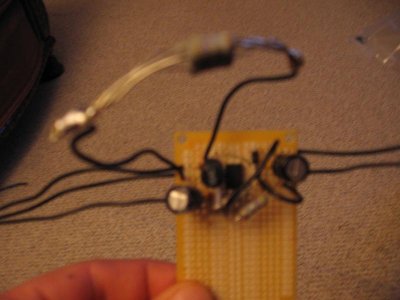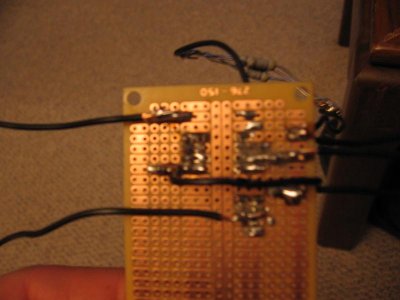what voltage are people running their power supply at. Is 24v optimal below that the LEDS don't seam bright enough. raising the voltage to like 26v seams to make it quite a bit brighter. I am using DWZM's driver design. I am only running 8 LEDS on my 150 right now will the shimmer effect be less when I add more LEDS. Seams like it shimmers like crazy now. Also what temp should the LEDS be below. They only read a couple degrees hotter than room temp.
Can you measure current and voltage on the output side? What Rsense value did you use, and what current do you THINK you're running at? If adjusting the voltage makes a difference in output, it means one of two things has happened:
1) The driver just plain isn't working - the switch isn't switching, and you're just passing the input voltage straight through to the LEDs (minus a small drop from the resistance of the circuit). This can happen because of incorrect or broken components. Earlier in the thread, I mentioned my first prototype had the wrong timing capacitor. It acted like you're describing.
2) If you're using an Rsense value to create a VERY low current, it will be very easy to overdrive the driver. Since this is a boost driver, it needs an input voltage lower than the output voltage. If it gets an input voltage that's too high, it'll just pass that voltage through to the LED string.
If you're running 8 LEDs and adjusting the input voltage makes a difference over the range you're describing, I'm worried that it's #1, not #2. Did you double-check all your component values? What current are you trying to run at, and what current are you seeing on the output side?
Keep in mind that you're treading on dangerous ground when you turn the input voltage up. Make SURE you know the characteristics of the LEDs and what their Vf would be at their max rated current, and NEVER supply the driver more than that, or you'll blow everything up.

PS if people are having any problems at all, please report them in the thread - that way, the troubleshooting experiences can be valuable to anyone else who might be trying to design.


